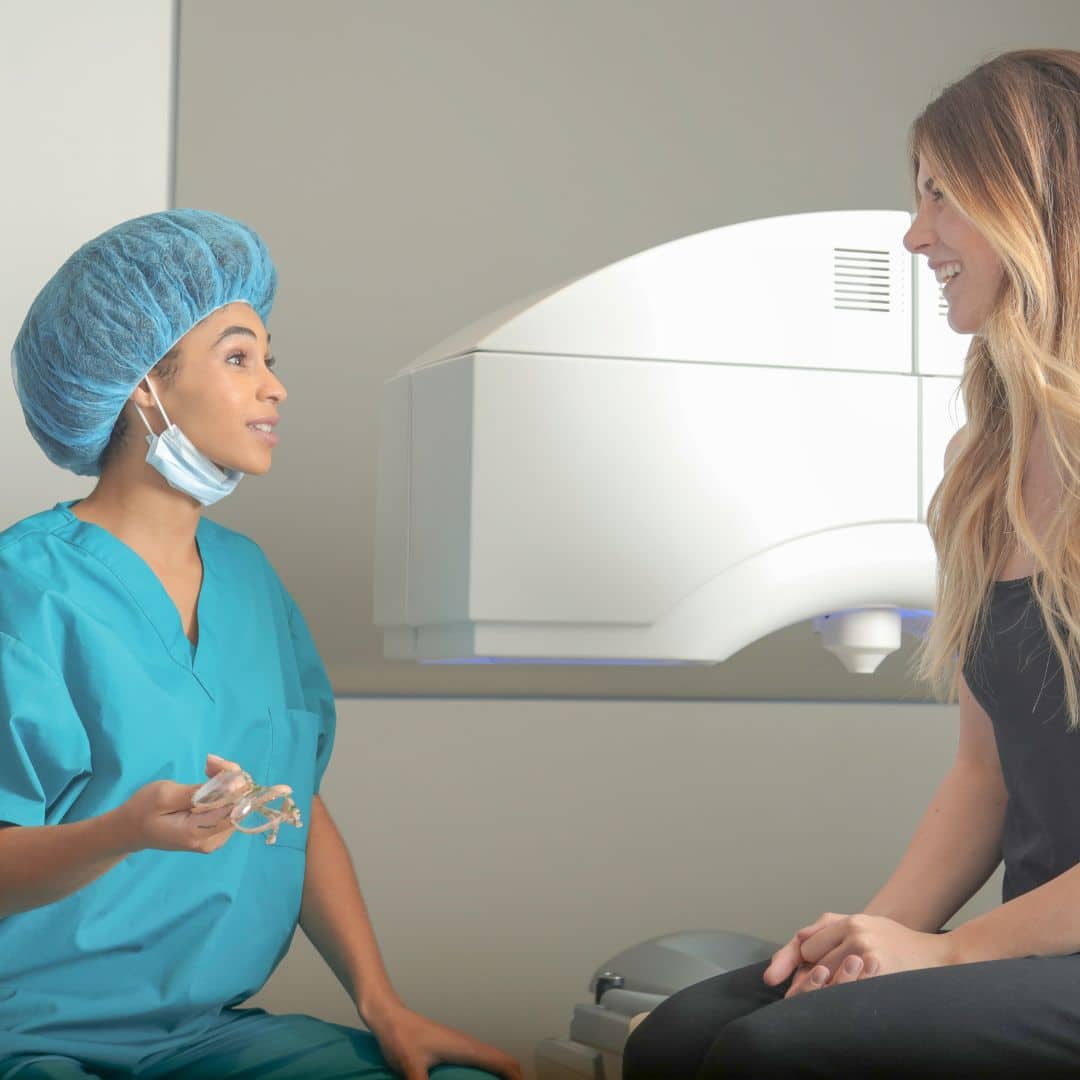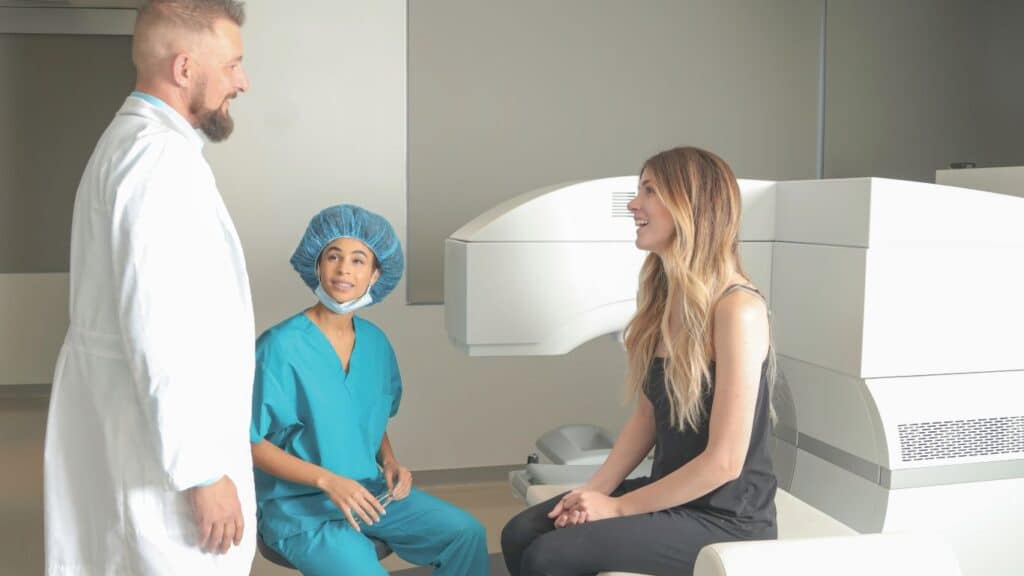Struggling with poor eyesight can significantly impact your quality of life, diminishing both your day-to-day convenience and overall well-being. Whether you're finding it difficult to read a book, watch TV, or drive safely, impaired vision can be a persistent source of frustration. Depending on your diagnosis, you might be considering surgical options such as LASIK vs cataract surgery to improve your vision. But what's the difference between cataract surgery and LASIK surgery? Understanding the various eye procedures available is crucial for making an informed decision about your eye health.
Cataract surgery removes the cloudy lens from the eye and replaces it with an artificial one to improve vision loss due to aging. On the other hand, LASIK reshapes the cornea to fix the patient's vision problems, often getting rid of the need for glasses or contact lenses.
In this blog post, we will delve into the key differences between LASIK and cataract surgery, explore who each procedure is best suited for, and discuss the recovery process for both. By the end, you'll have a clearer picture of what's the difference between cataract surgery and LASIK surgery, enabling you to make a more informed choice for your vision care.
The primary purpose of cataract surgery is to treat cataracts, which are cloudy areas that can develop on the lens, leading to a significant reduction in vision clarity. Statistically, cataracts affect over 20.5 million Americans aged 40 and older, making this surgery one of the most commonly performed procedures in the United States.
There are several types of cataract surgery, each using different techniques to remove and replace the cloudy lens:
Anyone experiencing significant vision impairment due to cataracts may be a good candidate for cataract surgery. This procedure is typically recommended when cataracts begin to interfere with daily tasks such as reading, driving, or recognizing faces.
Cataracts can form due to a variety of reasons including:
Common symptoms include:
If you experience these symptoms, it might be time to consult an ophthalmologist. For example, here at the Texas Vision & Laser Center, we will fully discuss your symptoms and explore potential treatment options. Texas Vision & Laser Center has been North Texas’ trusted ophthalmology practice since 2007, specializing in comprehensive eye care and surgery provided by compassionate, board-certified medical doctors and eye surgeons.
Learn more about how Texas Vision & Laser Center can help you achieve clearer vision and improve your overall eye health by scheduling a consultation with us today.
Book A Consultation Today & See The Difference!
Understanding what happens before, during, and after surgery is crucial for alleviating any fears or concerns you might have.
Several steps are taken before the actual surgery to ensure its success. These include a comprehensive eye exam, measurements of your eye to determine the right type of IOL and temporary adjustments to any medications you may be taking.
Now, here is the step-by-step surgical process:
The entire procedure usually lasts less than 30 minutes, and you can often return home the same day.
Post-surgery care involves using prescribed eye drops to prevent infection and assist in healing. Your doctor will likely suggest avoiding strenuous activities and protecting the eye from irritants. Recovery time varies, but most patients notice improved vision within a few days.
There are numerous benefits, making this surgery a highly rewarding option.
As with any surgical procedure, cataract surgery carries potential risks.
Common risks include infection, inflammation, and swelling. These are generally manageable with medication.
In rare cases, complications such as persistent pain can occur. According to research, these serious complications occur in less than 34% of cases after 6 months post-op. Nonetheless, it’s crucial to have a detailed discussion with your doctor about these potential risks to make an informed decision.

LASIK surgery is a cutting-edge procedure designed to correct common vision problems by reshaping the cornea, improving how light is focused on the retina. The primary purpose of LASIK surgery is to treat refractive errors such as nearsightedness, farsightedness, and astigmatism, reducing or entirely eliminating the need for glasses or contact lenses. According to a statistical report done by the Vision Center, LASIK boasts a 96% satisfaction rate, making it one of the most successful to correct vision.
There are several advanced types of LASIK surgery tailored to different needs:
Not everyone is a candidate for LASIK surgery, so understanding who qualifies is crucial.
Typically, candidates for LASIK should be over 18 years old, have a stable vision prescription for at least one year, and possess healthy corneas. Certain health conditions, like autoimmune diseases or severe dry eyes, may disqualify someone from being an ideal candidate.
LASIK is effective in treating various refractive errors:
Knowing what to expect before, during, and after LASIK surgery can be incredibly reassuring.
Before surgery, you'll undergo a thorough eye examination, including corneal thickness measurement and mapping.
The surgical process is simple:
The entire procedure generally takes about 30 minutes, and patients often notice improved vision within 24 hours.
Postoperative care involves using prescription eye drops to prevent infection and reduce inflammation. Patients must also wear an eye shield over their eyes. Most patients resume normal activities within a day or two.
LASIK surgery offers numerous advantages that make it a compelling option for many.
As with any surgical procedure, LASIK carries potential risks.
Common risks include dry eyes, glare, halos, and fluctuating vision, which often stabilize within a few months. Rare complications such as flap complications or vision loss can occur.
Let's further break down the question. "What's the difference between cataract surgery and lasik surgery?" as we compare the two procedures.
Both LASIK and cataract surgery aim to improve vision, but they do so with different objectives. Basic cataract surgery is primarily performed to remove cloudy lenses caused by cataracts, restoring clear vision. On the other hand, LASIK surgery is designed to correct refractive errors like nearsightedness, farsightedness, and astigmatism, which reduces dependency on glasses or contact lenses.
Eligibility criteria like age, eye health, and specific vision problems dictate who can benefit from each surgery. Cataract surgery is typically recommended for older adults who have developed cataracts, usually around the age of 60 or older. LASIK surgery is generally suitable for adults over 18 who have had a stable vision prescription for at least one year and who have healthy corneas.
The surgical approaches for cataract and LASIK surgeries differ fundamentally. In cataract surgery, the eye’s natural lens is removed and replaced with an artificial one. The use of phacoemulsification, where ultrasonic waves break the lens into small pieces for removal, is a common method. On the other hand, LASIK involves creating a flap in the cornea, reshaping the underlying corneal tissue with a laser, and then repositioning the flap.
The financial costs of these surgeries can also influence decision-making. In the United States, cataract surgery typically ranges from $3,500 to $7,000 per eye, depending on the type of intraocular lens (IOL) implanted. LASIK surgery costs vary from $2,000 to $3,000 per eye, based on the technology and specific technique used.
While both cataract surgery and LASIK surgery aim to enhance vision, they address different eye conditions with unique techniques and outcomes. Cataract surgery is mostly for older individuals dealing with cloudy lenses, while LASIK is a popular choice for adults looking to correct refractive errors. Understanding these differences can help you make a more informed decision about your eye health needs.
Curious whether you're a candidate for LASIK or cataract surgery? Contact us at TVLC today to schedule a consultation and explore your options for clearer vision.



